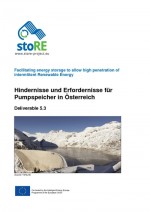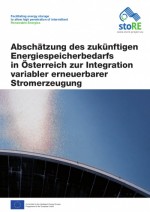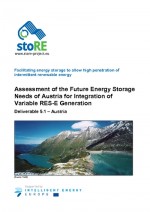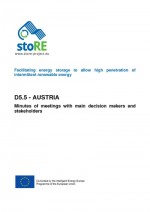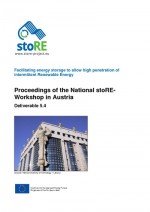Current situation in Austria

Image courtesy of VERBUND Hydroelectric power supplies approximately 55% of Austrian electricity with an installed capacity of 11,853 MW of which 3,500 MW is PHS. The actual wind installed capacity is around 1000 MW with another 700 MW planned up to 2015. Austria has developed a huge capacity on PHS due to its geographical characteristics with existing storage lakes reducing the building required. According to “APG-Masterplan 2020”, the official 10 years generation and transmission forecast of the Austrian TSO Austrian Power Grid (APG), up to 2020 up to 5,500 MW of new PHS installations are envisaged. The Austrian market is characterized by a high level of public ownership with local governments and municipal councils owning the majority share in most businesses. Austrian policy supports RES-E through feed-in tariffs that are adjusted frequently by law. The responsible authority is obliged to buy the electricity and pay a feed-in tariff.
At present, the future PHS capacity extension plans/needs are not quantified in the corresponding sections of the Austrian electricity law (called “Elektrizitätswirtschafts- und –organisationsgesetz (ElWOG)”). However, the Austrian TSO is obliged to collect the different PHS capacity extension plans from the different market participants in their control zone and has to publish them in the official 10 years “APG-Masterplan” (updated biannually in the future). It is straightforward, that these PHS capacity extensions also trigger further transmission grid extensions to enable better connection and integration of PHS technologies into the Central and Eastern European electricity system.
So far, PHS operators provide flexible capacities for the secondary reserve market in Austria based on special, bilateral contracts with the Austrian TSO APG. In the future it is intended to gradually open the secondary reserve market both in terms of number of market participants as well as geographically (also beyond national borders).
A significant barrier for PHS capacity expansion and operation, however, is the currently implemented regulatory regime (like transmission grid charges defined and quantified in the corresponding paragraphs of “ElWOG”). Among others, a significant impediment affecting the economics of the PHS technology is a transmission grid charge, having to be paid in both modes: generation and pumping.
Project results in Austria
The project investigated the effect of the regulatory and market framework conditions on the development of new and operation of existing energy storage facilities in Austria and the other target countries. The existing market mechanisms and the regulations were scrutinised identifying possible barriers.
Using the assessment of the energy storage needs in Austria as a basis, a wide consultation process with the key actors, including an on-line questionnaire and a workshop, took place, the results of which fed into an action list including recommendations for improvements. The action list was then promoted within targeted decision makers and stakeholders in order to get the actions adopted to the extent possible.
29 Jul 2013: Energy Storage Needs in Austria - Executive Summary (in German)
28 Jul 2013: Energy Storage Needs in Austria

